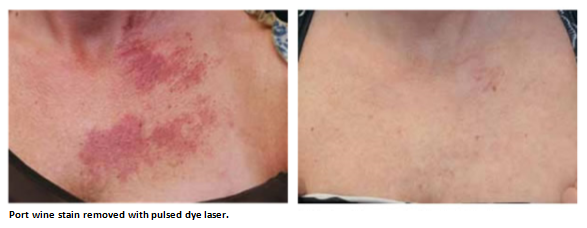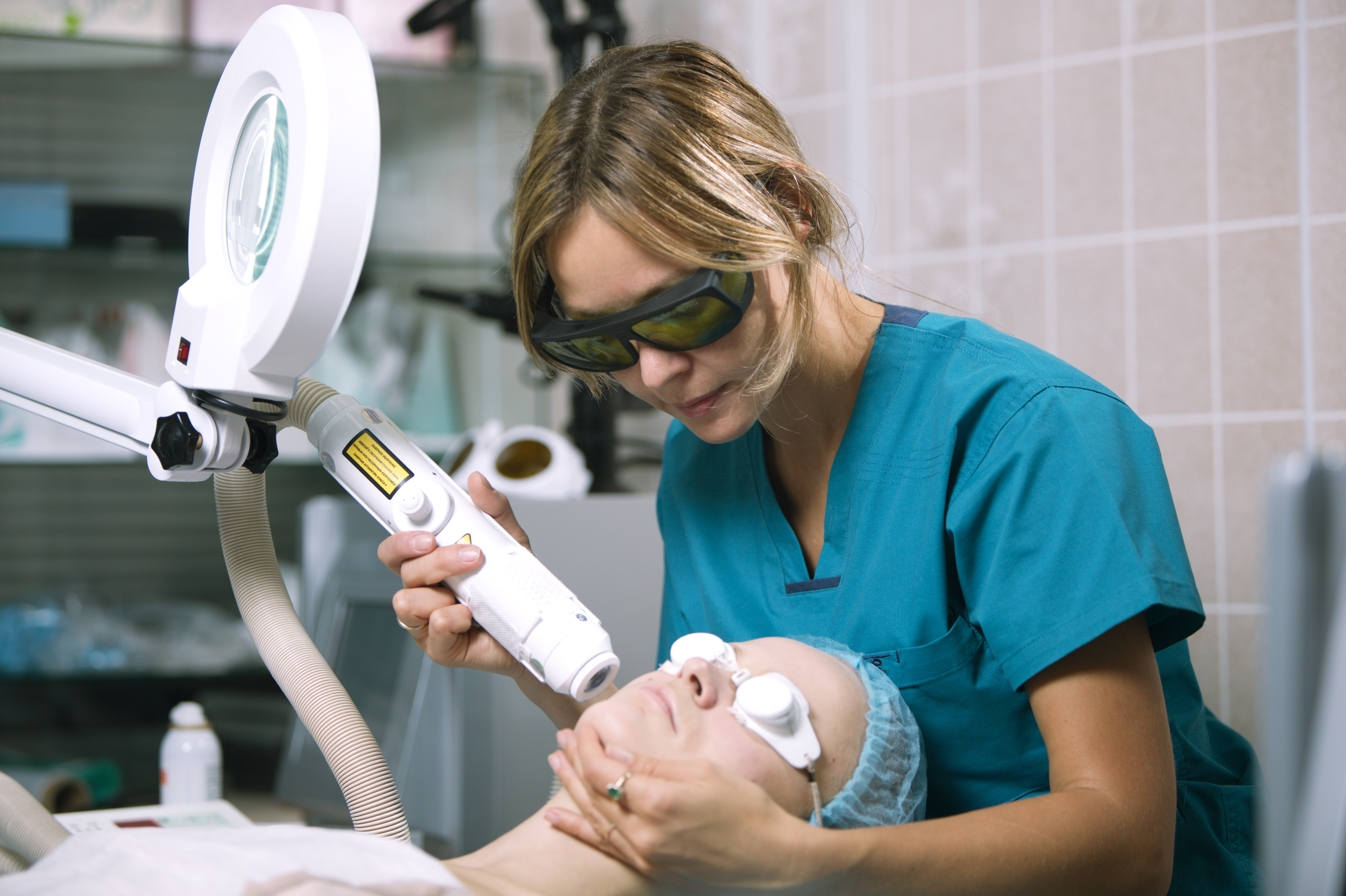Laser Surgery
Lasers are medical devices which produce high-energy, focused beams of intense, “single-colored” light and heat which have been found – through ongoing research and extensive clinical experience – to selectively interact, in very useful ways, upon various tissues within the skin and body. Lasers can be used for the successful treatment of many aesthetic and medical conditions.
About the time I realized that my regular workouts weren’t going to reverse these signs of aging, I became aware of laser resurfacing. Now, after full-face resurfacing, the lines are much less noticeable, and my skin looks young and fresh again. It’s just what I needed to get me over the hump of turning 40.
– tspeck , age 40

Types of Lasers
Laser Skin Resurfacing
Lasers can be used to reduce wrinkles around the lips or eyes, even the entire face, softening fine wrinkles and removing certain pigmentations and other colored blemishes on the face. Skin resurfacing can be combined with surgical rejuvenation procedures such as facelift and eyelid surgery to deliver a better overall result. This should be discussed with your facial plastic surgeon who should have knowledge as how to safely deliver the laser energy to minimize complications. Lasers used for skin resurfacing include CO2 and Er:YAG lasers. These lasers can also be used for the treatment of acne scarring. Technological advances have allowed these lasers to be delivered with fractional technology allowing only a fraction of the skin’s surface to be treated at one time which minimizes downtime and the side effects of treatment.
Laser Removal of Birthmarks and Skin Lesions
Port-wine stain birthmarks respond remarkably well to laser treatment. The abnormal blood vessels that cause these marks are reduced in size by the laser. This results in a lightening of the treated area. Skin growths, facial “spider veins,” warts, dark spots or “age spots”, hair for removal, scars and some tattoos respond to laser surgery. Most situations take more than one laser treatment, but some respond to a single treatment.
New Lasers
There are constant technological advances which lead to new applications of future generations of lasers. Please ask your doctor to discuss the latest advances with you.
Many of these laser surgeries are performed as outpatient treatments in hospitals or offices.

Understanding the Surgery
After your surgeon has indicated that a laser can be helpful in the surgery, your surgeon will explain the laser of choice and what can be accomplished. As with all surgery, the laser has its limitations. Often the results are very good. Occasionally, repeat treatments are needed to achieve the best result.
Some surgeons may use local anesthetics to numb the treated area before the surgery. Cooling devices may also be used to improve your level of comfort during the procedure. Surgery can sometimes be done in the surgeon’s office; other times the surgeries are performed in outpatient facilities at a clinic or hospital. Your surgeon will decide on the appropriate method, dictated by the nature of the surgery.
Because safety is a major component of laser use, your surgeon will describe safety precautions including the use of eye protection before the surgery.
What to Expect After Laser Surgery
After the surgery, you will probably experience some swelling and skin redness for several days. Depending on the depth of the treatment, there may be open wounds that require specific regimens that the surgeon will want you to follow. Thick-layer ointments may be used during the healing process. It is important for the patient to follow all the post-operative directions of the surgeon, particularly in using sunblock and avoiding sun exposure.
The full impact of the laser may not be apparent for a month or two, especially with vascular deformities. Additional treatment sessions will not be scheduled until the healing process for a particular treatment is complete.
It is important for the patient to realize that lasers have specific applications. The facial plastic surgeon is experienced in the use of the laser and is the best source of information as to whether laser surgery is appropriate for your condition.
Insurance does not generally cover surgery that is done purely for cosmetic reasons. Surgery to correct or improve congenital deformities or to treat multiple precancerous lesions such as actinic keratoses or accidental burns or skin injuries may be reimbursable in whole or in part. It is the patient’s responsibility to check with the insurance carrier for information on the degree of coverage.
A number of techniques are available today that enable facial plastic surgeons to treat a wider range of skin problems than ever before.